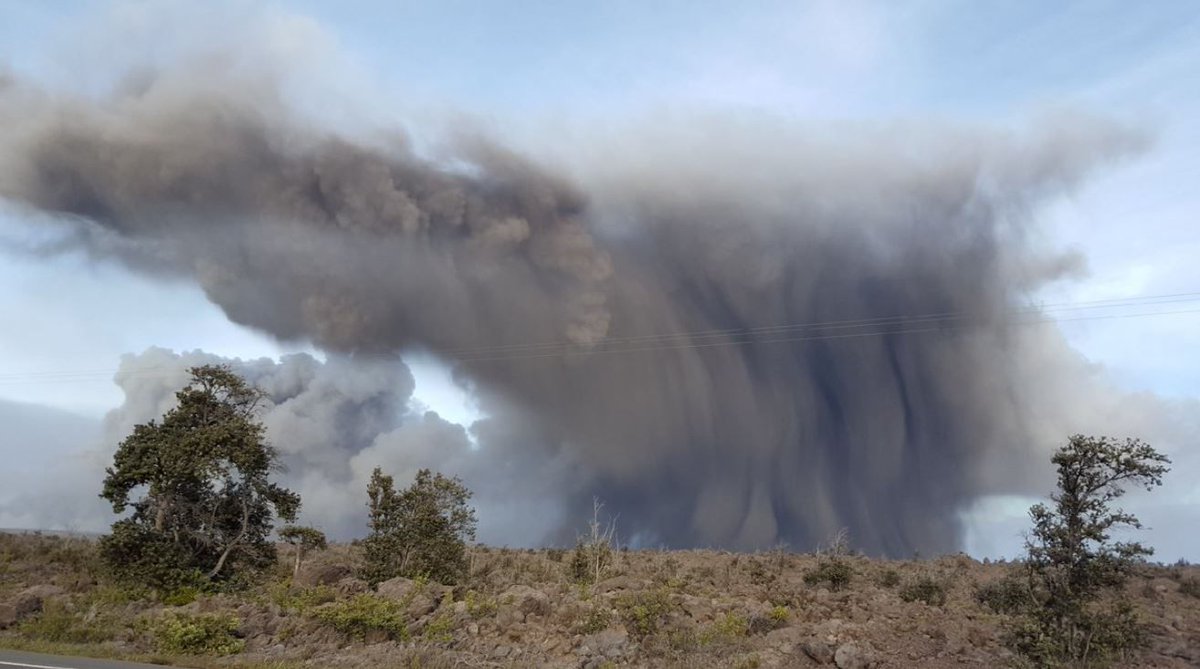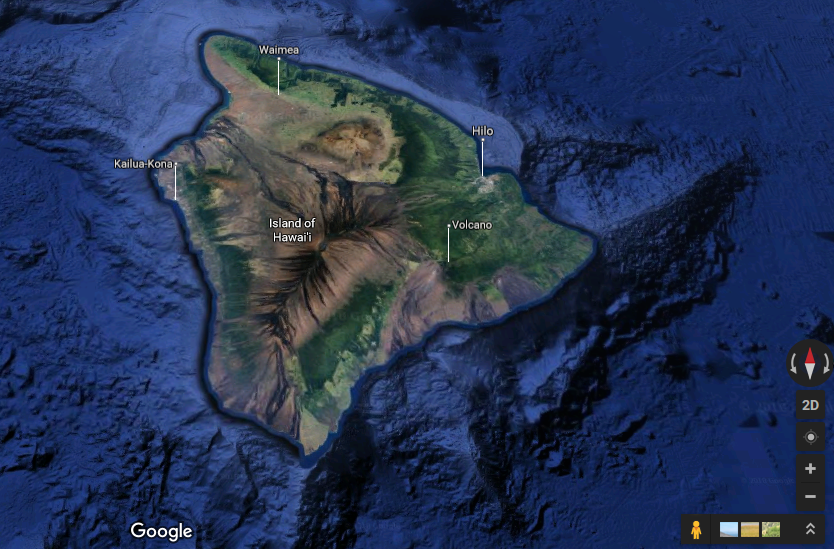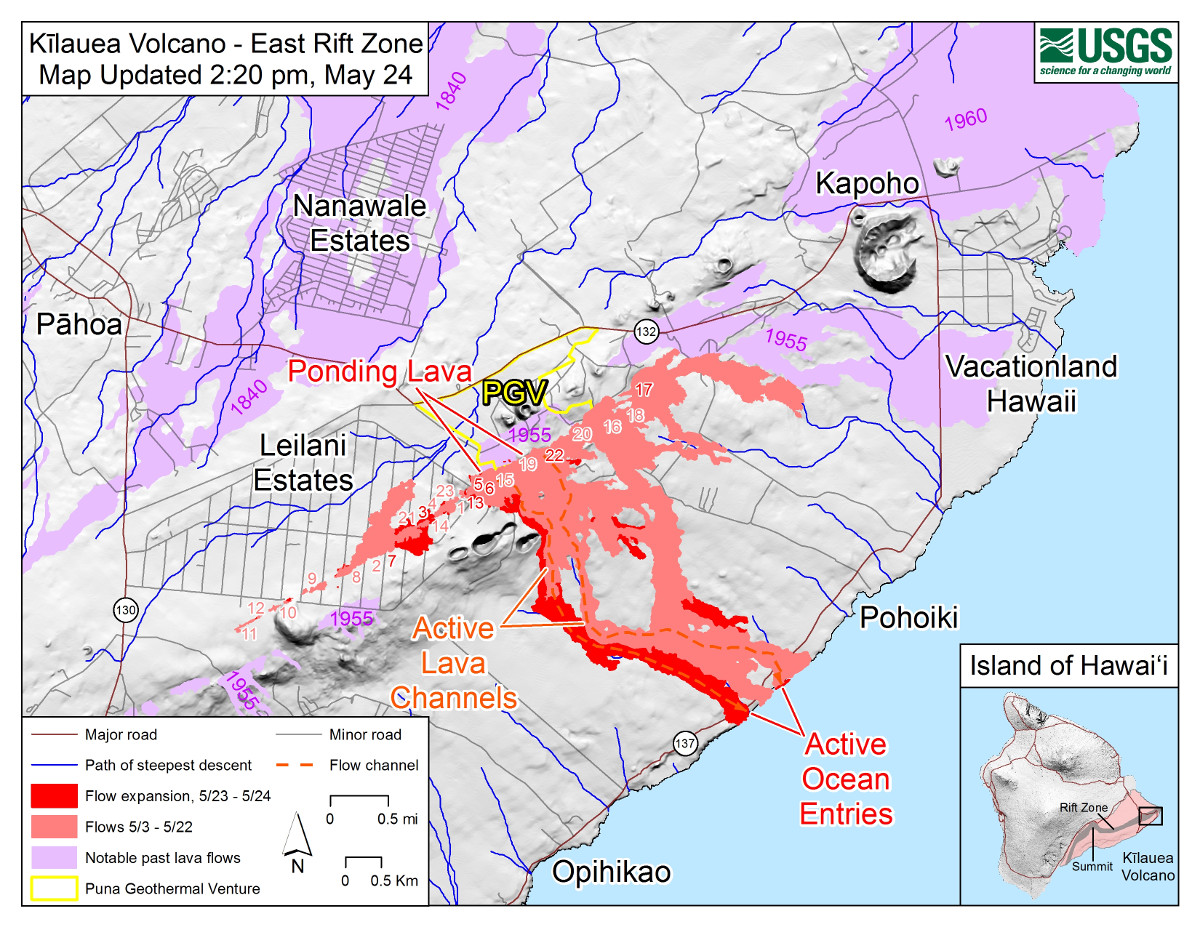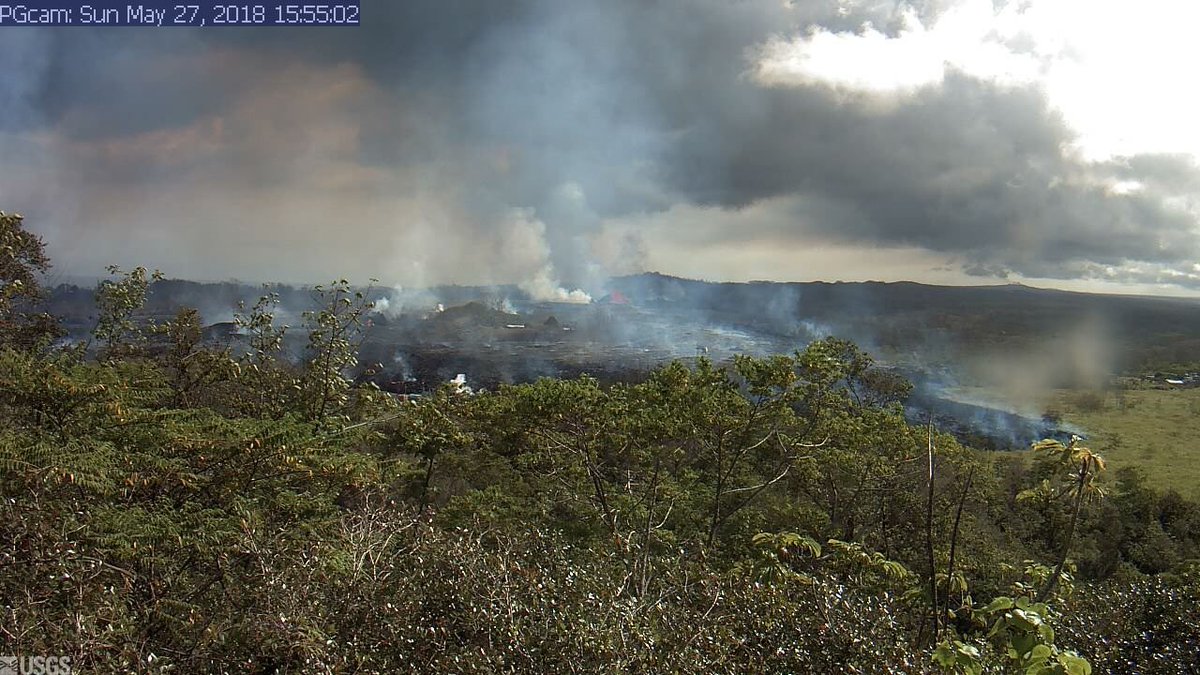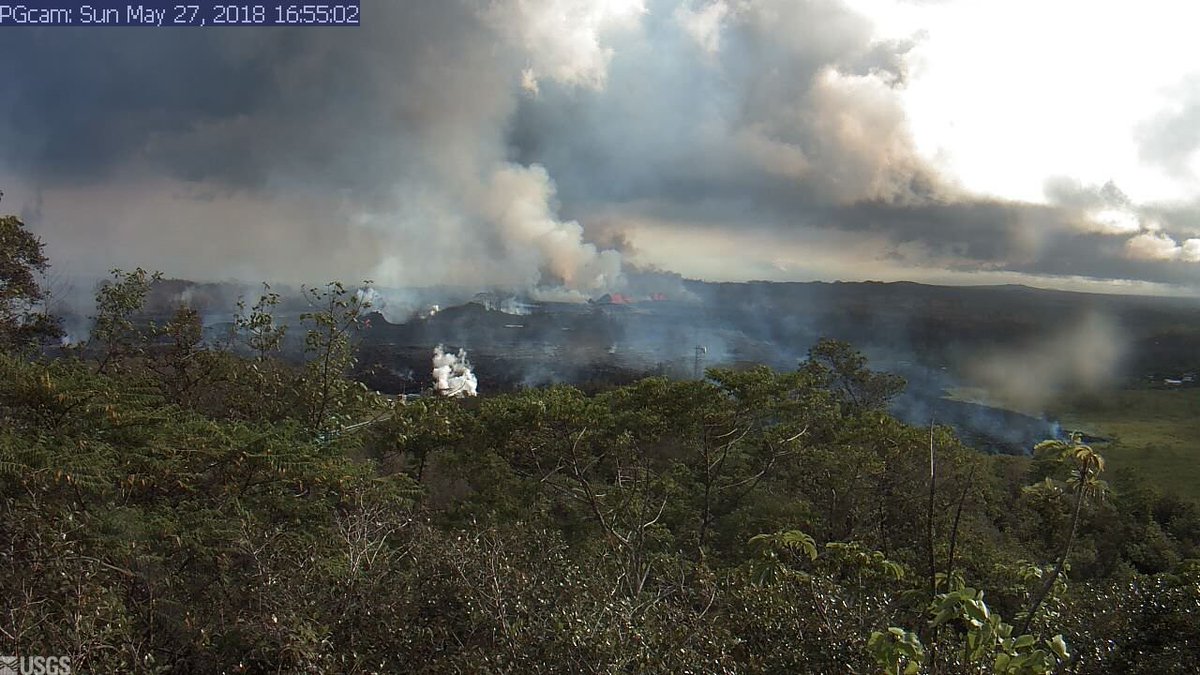Ashfall Advisory For Ka'u Lingers Into Wednesday
May 16, 2018 at 12:37 am
(BIVN) – The rarely-seen ashfall advisory, issued for the Kaʻū district by the National Weather Service in Ho
nolulu, continued into Wednesday, after the eruption of ash from the summit of Kilauea increased in intensity on Tuesday.
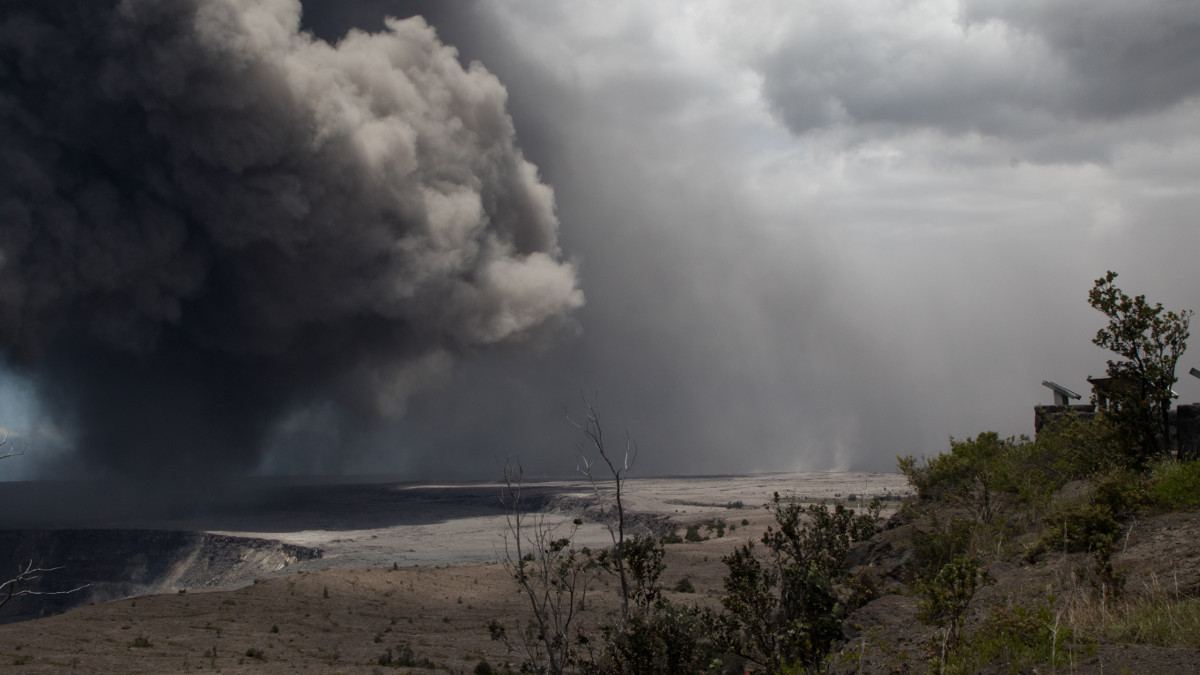
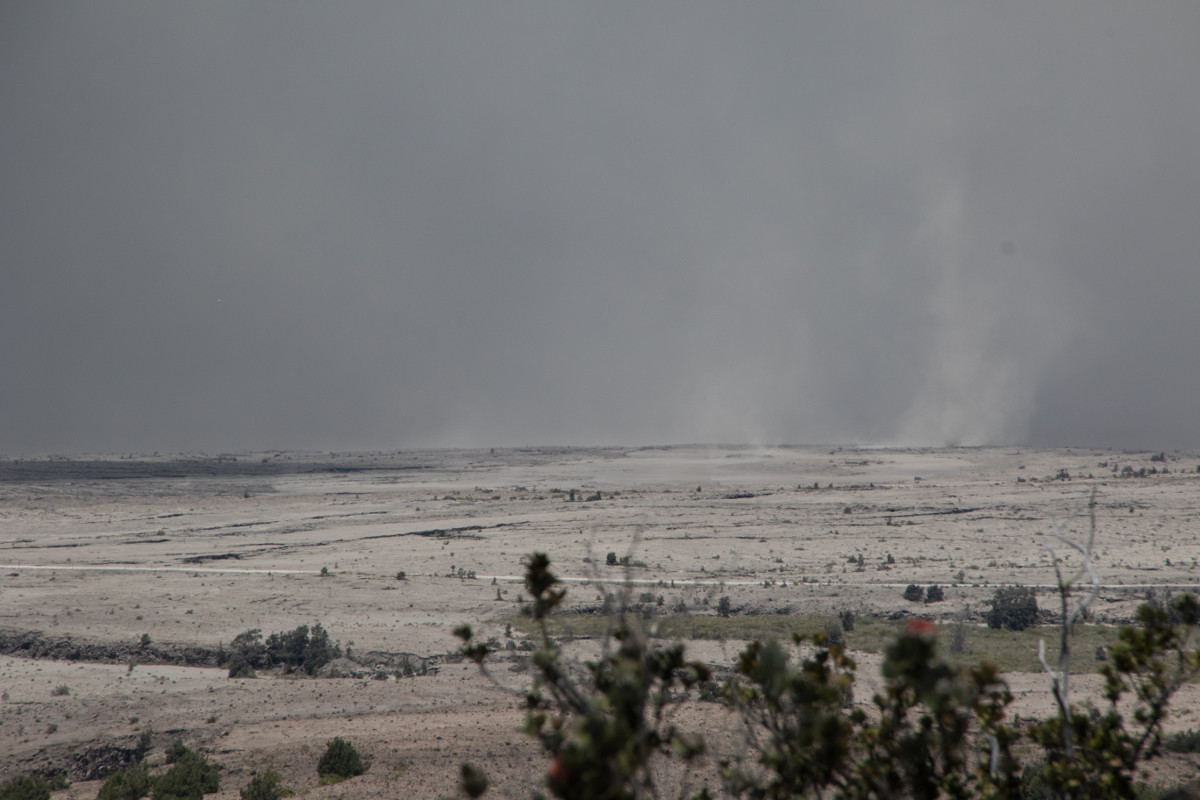
(USGS) At 1:38 p.m. HST. A telephoto photo from the Hawaiian Volcano Observatory looking toward the southwest shows gray ash blanketing the Kau Desert landscape
VIDEO: 7 pm Eruption Update - Heavy De-gassing Occurring
Published on May 16, 2018
VIDEO: Dual-Status Command Established For Eruption Response
STORY SUMMARY:
HILO, Hawaii - Brig. Gen. Kenneth Hara spoke to media at the Keaukaha Military Reserve on Wednesday afternoon, announcing the approval of the request for the Joint Task Force 50
Published on May 16, 2018
Image of the Week - Hawaii's Lava Flow
USGS Published on May 16, 2018
Flash back:
USGS Scientist Talks About Lava Lake in Halema‘uma‘u Crater
Published on Mar 26, 2018
Geologists: Kilauea is no Mount St. Helens
Large rocks tossed several hundred feet from Halemaumau Crater http://dlvr.it/QT5fR8
2:38 PM - 16 May 2018 [B]khon2 News[/B]
At summit, dozens of quakes and thick emissions an ominous sign as eruption feared
PAHALA, HAWAII (HawaiiNewsNow) -Thursday, May 17th 2018, 1:06 pm CEDT Video's Tweets, Pic's
May 16, 2018 at 12:37 am
(BIVN) – The rarely-seen ashfall advisory, issued for the Kaʻū district by the National Weather Service in Ho
nolulu, continued into Wednesday, after the eruption of ash from the summit of Kilauea increased in intensity on Tuesday.
“Ash has been rising nearly continuously from the vent and drifting downwind to the southwest,” USGS Hawaiian Volcano Observatory wrote. “Ashfall and vog (volcanic air pollution) has been reported in Pahala, about 18 miles downwind. NWS radar and pilot reports indicate the top of the ash cloud is as high as 10,000 to 12,000 feet above sea level, but this may be expected to vary depending on the vigor of activity and wind conditions.”

One quarter of an inch is expected to be deposited in the advisory area

(USGS) At 1:38 p.m. HST. A telephoto photo from the Hawaiian Volcano Observatory looking toward the southwest shows gray ash blanketing the Kau Desert landscape
VIDEO: 7 pm Eruption Update - Heavy De-gassing Occurring
VIDEO: Dual-Status Command Established For Eruption Response
STORY SUMMARY:
HILO, Hawaii - Brig. Gen. Kenneth Hara spoke to media at the Keaukaha Military Reserve on Wednesday afternoon, announcing the approval of the request for the Joint Task Force 50
Image of the Week - Hawaii's Lava Flow
USGS Published on May 16, 2018
https://www.youtube.com/watch?v=E1MpMP98uuAFlash back:
USGS Scientist Talks About Lava Lake in Halema‘uma‘u Crater
Published on Mar 26, 2018
https://www.youtube.com/watch?v=y0lNb4Hz7acHawaiian Volcano Observatory research geologist Matt Patrick talks about the lava lake in the Halema‘uma‘u Crater at the Kīlauea Volcano (Hawaii). Dr. Patrick describes the eruption that created the lava lake and points out features of the lake including moving crustal plates, gas bursts, spatter and collapse scars on the crater rim.
Dr. Patrick also discusses hazards near the lake, such as explosions and volcanic gases. This is a recording of the USGS Volcanoes Facebook Live event held on March 19, 2018, on the 10th anniversary of the summit eruption.
Geologists: Kilauea is no Mount St. Helens
Large rocks tossed several hundred feet from Halemaumau Crater http://dlvr.it/QT5fR8
2:38 PM - 16 May 2018 [B]khon2 News[/B]
At summit, dozens of quakes and thick emissions an ominous sign as eruption feared
PAHALA, HAWAII (HawaiiNewsNow) -Thursday, May 17th 2018, 1:06 pm CEDT Video's Tweets, Pic's
At least 125 shallow quakes rattled Kilauea's summit and neighboring communities Wednesday, causing minor damage to roads and buildings amid growing concerns about a violent, steam-driven eruption at Halemaumau Crater.
The tremors come as ash emissions continue to pour from the crater.
Michelle Coombs, of the Hawaiian Volcano Observatory, said the situation remains "very, very active and very dynamic."
She added, "The potential for larger explosions is still there."
Geologists say the quakes are being caused by the ongoing deflation at the summit and as lava levels continue to decline. As of Wednesday afternoon, the floor of the Kilauea caldera has dropped about 3 feet.
The strongest quake in the area was a magnitude 4.4, and dozens more have been upwards of magnitude 3.
Because the tremors are shallow, they cause greater shaking — and increase the potential for damage.
Employees at the Hawaiian Volcano Observatory and nearby residents are reporting frequent shaking, and the quakes caused several large cracks on Highway 11 along with structural damage to buildings at Hawaii Volcanoes National Park.
Also on Wednesday, Hawaiian Volcano Observatory said rocks up to 2 feet wide were hurled from the crater to a parking lot hundreds of yards away.
The "ballistic" rocks "reflect the most energetic explosions yet observed and could reflect the onset of steam-driven explosive activity. Additional such explosions are expected and could be more powerful," officials said.
Scientists have warned that eruptions at the summit could send heavy ashfall across communities near the summit and toss boulders "the size of cows" as far as a half a mile. Given the threat, Hawaii Volcanoes National Park remains closed, and civil defense officials are urging those who live near the crater to remain vigilant.
The news comes amid worsening air quality conditions on the Big Island, and as civil defense authorities continue to respond to Kilauea's ongoing eruptions in lower Puna, where thousands of people remain under mandatory evacuation orders.
Forecasters are warning residents that ashfall remains a threat, especially across the Ka'u District.
Thick vog (volcanic haze) is also impacting parts of the island. Authorities said the thicker vog posed no immediate threat, but that officials would continue to monitor the situation.
And more than 20 miles away in lower Puna, along Kilauea's east rift zone, hazardous fumes and lava are continuing to pour from active fissures. In the southeast area of the Lanipuna Gardens subdivision and surrounding farm lots, the air quality level remains at condition "red," which means anyone in the area is in immediate danger. Mandatory evacuation orders remain in place for communities along with neighboring Leilani Estates.
On Tuesday, thick, dark columns of ash poured from Halemaumau Crater, extending up to 12,000 feet above sea level and dropping ash as far as 18 miles downwind.
Dramatic images showed large plumes looming over the Volcano Golf Course. In Pahala, residents reported heavy vog and significant ashfall.
Emissions waxed and waned overnight, and authorities were able to cancel an ashfall advisory about 7:30 a.m. Wednesday. Forecasters warned, however, light ashfall and hazardous air conditions will continue.
Bob Ballard, of the National Weather Service, said the breezy trade winds on Tuesday were pushing the ash and plume onto the southwest region, but light winds on Wednesday will likely change where the ash goes.
"It depends on how big the explosive eruption is, if there is one," he said. "We'll be keeping an eye on that to see how tall it gets because winds will change with height."
Scientists have been warning residents for days about the threat of explosive, steam-induced eruptions at the summit crater.
The last time such eruptions happened was nearly a century ago, when shooting debris killed one and left a layer of ash over homes and cars.
In 1924, explosive events at the summit lasted for two and a half weeks and ash may have reached as high as 20,000 feet above sea level. Small amounts of fine ash fell as far as lower Puna and Waiohinu.
Researchers don't know when the explosive activity will occur, how large the explosions could be or how long they'd last.
But they warn that as fissures continue to open in Puna and lava travels downslope toward the sea, the chance for "explosive eruptions" at Halemaumau Crater on the summit of the volcano will continue to rise.
That's because a lava lake at the summit is dropping. When it hits the level of the water table beneath the Kilauea caldera, the influx of water into the conduit could trigger steam-driven eruptions, geologists said.
"If an explosion happens, there's a risk at all scales. If you're near the crater within a half a mile or so, then you would be subject to a bombardment by ballistic blocks weighing as much as 10 or 12 tons," said Don Swanson, of the Hawaiian Volcano Observatory.
"If you're within several miles of the summit of the volcano, of the lava lake, then you would be subject to falls of marble sized rocks, ash, finer grain material. and if you're beyond that say you're 10 miles, 15, 20 downwind, you could experience fine ash floating from the sky like snow."
The plumes that were emitting from the crater through Tuesday weren't from an eruption, however. Geologists say they were likely being created by rockfalls in the crater and gas explosions, though there's no way to confirm that.
On Monday, when the plume was much less intense, residents in Ka'u said the increased activity at the summit already had them feeling sick. Several residents have reported having headaches, sore throats, and watery eyes as a result of ashfall.
"I do have neighbors and friends and family and it has created more problems for them," said Jessie Marques, a Pahala resident. "Now they tend to stay indoors ... it has created a breathing problem for them."
Marques, who has asthma, says that the heightened sulfur dioxide levels and ash particles has complicated her health.
"I have asthma and (the volcanic activity) has exacerbated it, but I'm taking more of my medication and I'm taking care," Marques said.
Residents also reported ash coating their cars, decks and buildings as a result of recent volcanic activity. County officials went door-to-door Monday to hand out information about the ashfall and ways for residents to protect themselves from hazardous fumes and ash.
"There was really a thick layer of dust on our cars, and on our decks, and such so you can see and feel it," Marques added. "It's like black, grimy soot."

Here's a look at one of the rocks that was hurled from Halemaumau Crater. Geologists say the rock broke on impact, and that ash is covering the nearby area. (Image: USGS)

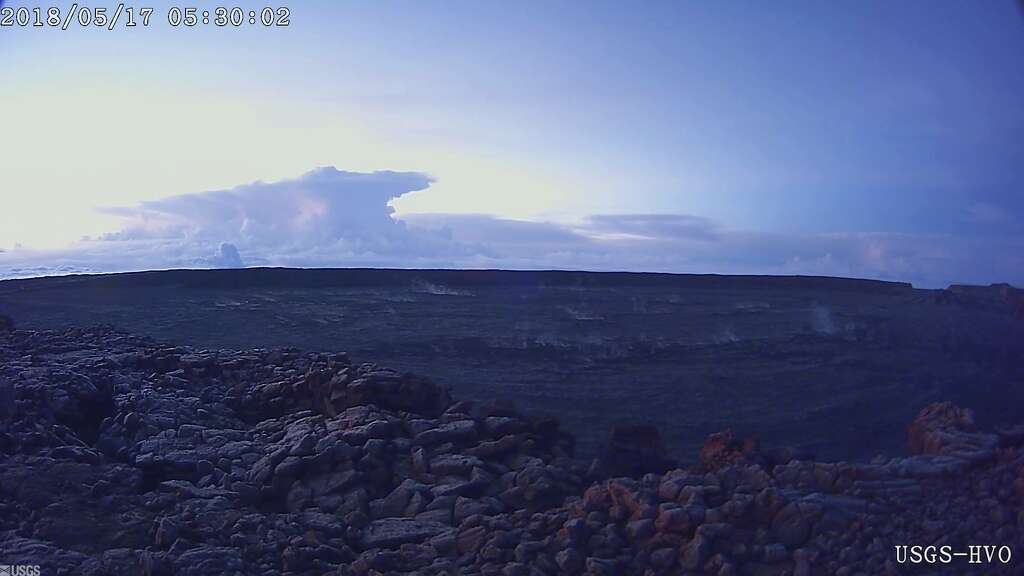
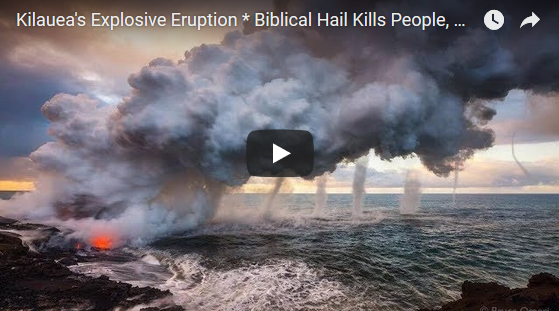

 .
.

